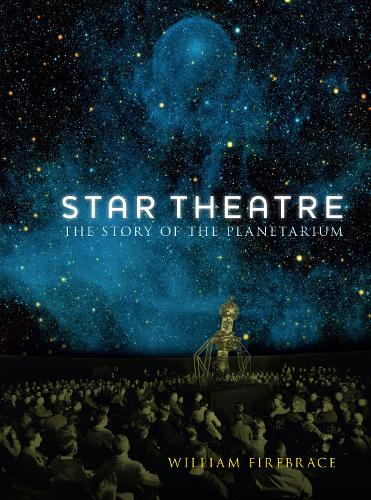
Star Theatre: The Story of the Planetarium
(Hardback)
Publishing Details
Star Theatre: The Story of the Planetarium
By (Author) William Firebrace
Reaktion Books
Reaktion Books
23rd October 2017
United Kingdom
Classifications
General
Non Fiction
Architecture: public, commercial and industrial buildings
520.74
Physical Properties
Hardback
232
Width 156mm, Height 208mm
Description
Most of us can recall a childhood visit to a planetarium: the sense of anticipation, the room darkening, the stars coming up, the voice of the astronomer. In the planetarium, the wondrous complexity of the cosmos combines with entertainment in a theatre of the night. But how and where did the planetarium originate What kind of simulation of the solar system and the universe does the planetarium produce How does the planetarium mix theatre with science And how has it changed with developments in astronomy
Star Theatre explores the history of this unique building, designed to reveal the universe around us on an ever-expanding scale. It traces its historical origins, from the early precedents for the planetarium, to its invention in Germany in the 1920s, its developments in the USSR and the United States, its expansion across the globe at the time of the space race, and the evolution of the contemporary planetarium in the recent period of startling astronomical and cosmological discoveries. This concise, well-illustrated history will appeal to planetarium lovers as well as those interested in astronomy, architecture, theatre, and cinema.
Reviews
Star Theatre offers fascinating insights into how astronomy has, through planetariums, evolved over the past century from a tool for education and personal improvement to a crowd-pleasing public spectacle. * Nature *
A masterful and well-researched examination of the architectural heritage and cultural significance of planetariums, such as the role of the Zeiss projector in fostering relations between Soviet-controlled East Germany and the rest of the world. It also contemplates how the development of planetariums has been influencedindeed, challengedby discoveries in astronomy such as black holes, gravitational waves, and the theory of dark matter, as well as the growing capabilities of projection technology . . . Excellent images. * BBC Sky at Night Magazine *
Firebraces account extends into the present day and is placed in a long genealogy of buildings and devices bearing varied religious, artistic, and epistemic connotations as regards the relationship between humans and the cosmos. This is an audacious undertaking, and Firebrace writes with panache . . . Firebraces book will likely prove enjoyable and informative reading for both nonexpert and scholarly audiences. As a historian of science who works in a major planetarium, I was frankly captivated by many of the illustrations, anecdotes, and literary and artistic references with which Firebrace adorns his account. * Isis Journal *
William Firebraces book provides interesting insight. In short, it gives us a fascinating outsiders look at our workplaces, their history, science, art, and architecture . . . as a planetarian and show producer with more than 40 years experience in our field, I found his look at our community and its theaters to be a refreshing one. It shows us set against a much larger backdrop of societal and cultural expectations about science, space travel, and entertainment. Its where weve always been, but I suspect we dont always have time to appreciate the nuances . . . Star Theatre is thoughtfully written, nicely illustrated and provides good references, and is well worth reading. * Planetarian: Journal of the International Planetarian Society *
A well-illustrated examination of the planetarium. From its origins in static and moving models of the night sky to its current incarnation in large hemispheric domes, the planetarium has sometimes served as a temple to science and sometimes as a link to cultural values of its local community. Early models showed an earth-centered universe meant to illustrate the relative motions of the planets, sun, and moon. Star ball planetaria originated in the 1920s, using a hollow ball with a light inside to project stars and planets. More recent manifestations use computer projections and a wide range of special effects to simulate traveling through space and time. Much of the text describes how local culture affects the designs of planetarium buildings and their programming. For example, Soviet era installations differ markedly from those in the US during the early space race and Cold War. Interesting descriptions of various authors memories of planetarium visits, settings in films, and poetry enhance the cultural examination. Overall, Firebrace's focus is more historical and cultural than scientific, making it best suited to general readersthough a decent bibliography is included. Recommended. * Choice *
Star Theatre is a richly illustrated history of the invention, development and widespread adoption of this new form of popular astronomical display and education, which became a must-have in cities around the world keen to prove their modernizing, scientific credentials. * Transactions of the Ancient Monuments Society *
Firebrace is at once keen dragoman, critic, poet, constantly astonished spectator, and informal reporter. His curiosity is boundless. * Jonathan Meades *
Author Bio
William Firebrace is an architect and the author of Things Worth Seeing (2001), Marseille Mix (2010) and Memo for Nemo (2014). He is based in London.
